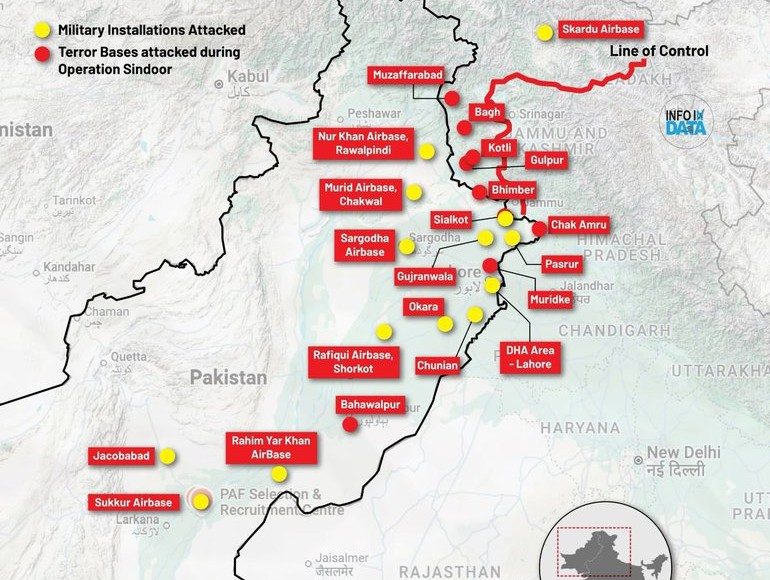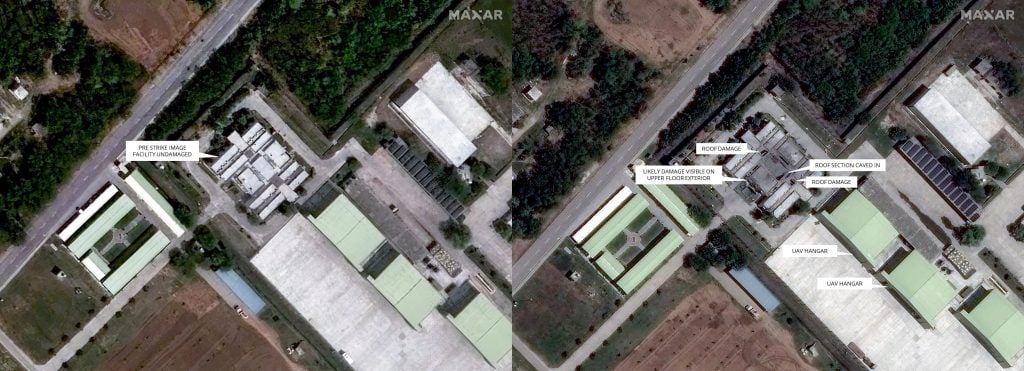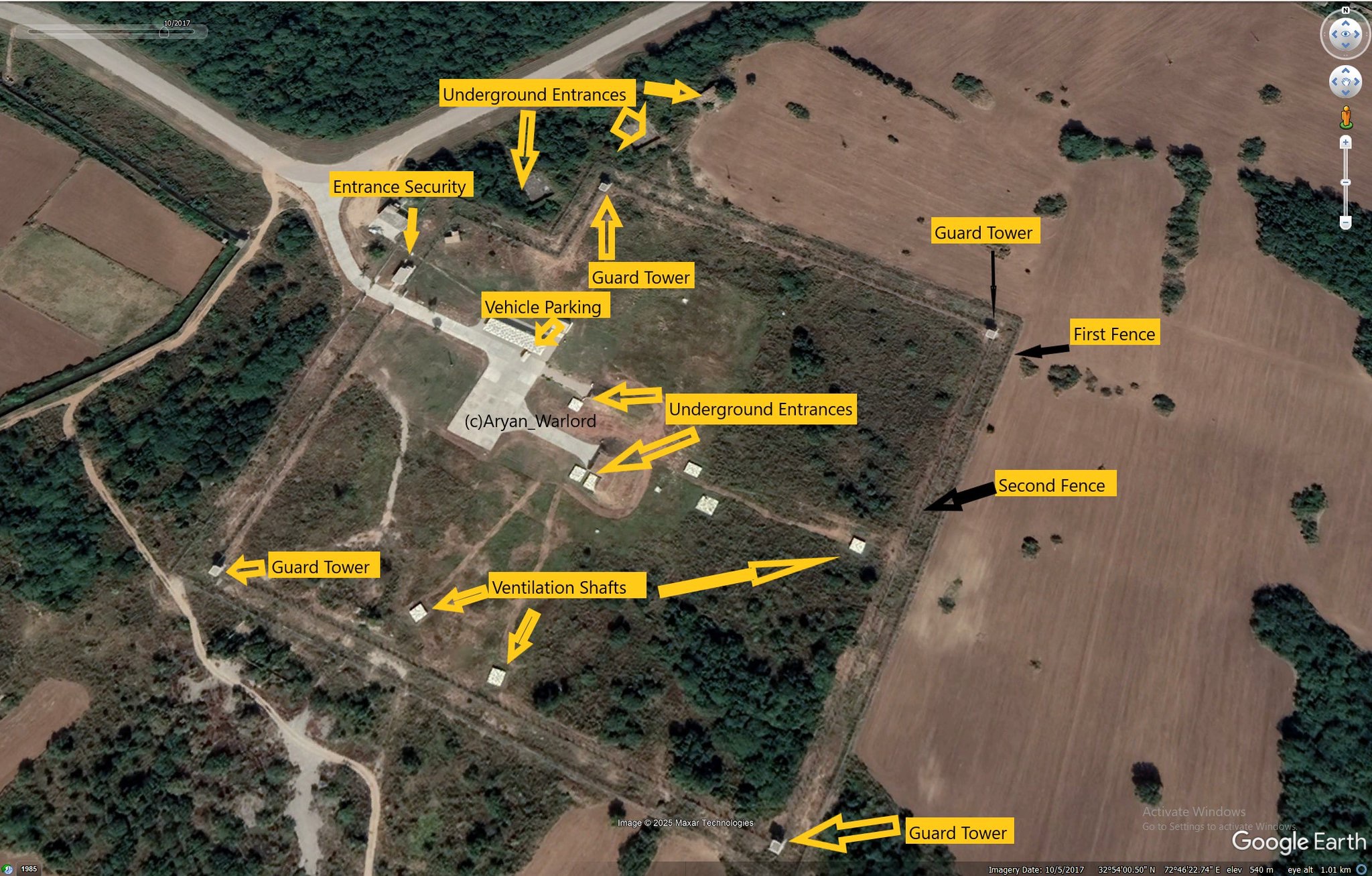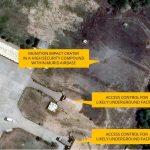During Operation Sindoor, as India neutralized 11 Pakistani air bases, it is widely suspected that a deep-penetration airstrike was conducted on the highly fortified Murid Air Base—potentially targeting underground strategic assets. While official confirmation remains elusive, compelling evidence from satellite imagery, open-source intelligence (OSINT), and independent expert analysis suggests a precise, high-impact strike that may have redefined the very architecture of India–Pakistan military engagement and deterrence.
Also Read: India Becomes The First Country to Strike 11 Air Bases of a Nuclear Powered Country
Also Read: Did India Strike Pakistan’s Nuclear Facilities?
Read More:
What is Murid Air Base and Why Is It Important?
Located in Chakwal district, Punjab, Murid Air Base is a key installation of the Pakistan Air Force (PAF) with high strategic value. Operational since 1942, the base has evolved into a center for advanced military operations.
Murid plays a critical role in combat drone and UAV operations, strengthening Pakistan’s aerial surveillance and strike capabilities. It also houses essential command and control infrastructure, enabling real-time coordination within PAF’s defence network.
The base is believed to have underground bunkers, possibly used for storing special weapons or nuclear delivery systems, making it highly sensitive. Its proximity to major military sites like Kamra and Sargodha further enhances its strategic significance.

What Do We Know About the Indian Strike on Murid?
A combination of satellite data, OSINT, and muted official statements paints a compelling picture:
Recent satellite images analyzed by experts such as Damien Symon reveal critical damage at Murid Air Base. The visuals show destruction to a Command and Control (C2) structure, a noticeable crater near a suspected underground entrance, and evidence pointing to the use of deep-penetration munitions.
Open-source intelligence (OSINT) reports highlight scorched earth patterns, burn marks, and penetrator craters around the site. These signs strongly suggest that bunker-buster munitions were employed, likely targeting underground facilities or special weapons storage areas.

“The Strike is visible at the most guarded complex within Murid Airbase. The approximately three-meter-wide munition impact crater is just 30 meters north of one of the two entrances to a likely underground facility,” says Damien Symon, a geospatial intelligence researcher associated with the Intel Lab, known for his work analysing satellite imagery to monitor military and infrastructure developments.
“This complex is heavily protected with double fencing, its own watchtowers and access control indicating its high-value nature as a target. The earth-protected entrances suggest this site might serve as storage for special equipment or as a hardened operational shelter for personnel, capable of withstanding heavy bombardment,” he added.
The DG ISPR vaguely acknowledged “material damage at one of our northern sector airbases,” but avoided naming Murid.
Why Would India Target Murid Air Base?
The targeting of Murid Air Base—located deep within Pakistani territory and heavily fortified—delivers a strong strategic message. It demonstrates India’s precision strike capability and signals that no military asset, even underground, is beyond its operational reach.
The timing of the strike, following the Pahalgam terror attack linked to Pakistan-based actors, suggests a calibrated retaliatory move. It serves to deter future cross-border terrorism while avoiding escalation into a wider conflict under Operation Sindoor.
Strategic Implications of the Murid Strike
The suspected strike on Murid Air Base could have serious military and operational repercussions for Pakistan. It may have disrupted UAV operations and compromised key air defense protocols, revealing vulnerabilities in infrastructure previously considered secure, including underground bunkers. This could force Pakistan to relocate or rethink the positioning of its critical military assets, particularly those tied to strategic deterrence.
Diplomatically, Pakistan’s muted response suggests a deliberate attempt to avoid international scrutiny or embarrassment, especially if the strike exposed critical defense weaknesses. On the other hand, India’s strategic ambiguity surrounding the operation allows it to retain geopolitical leverage, signaling strength without making direct provocations that could escalate tensions.
At a broader level, the operation also sends a regional signal—particularly to China. Demonstrating the ability to carry out deep-precision strikes against fortified targets, India underscores its capability and readiness in any high-stakes confrontation. This messaging is especially significant in the context of the ongoing India-China military standoff.
Conclusion
“The precision and depth of this strike suggest a paradigm shift in India’s counterforce capabilities.”
The alleged Indian strike on Murid Air Base—targeting suspected underground nuclear or drone infrastructure—marks a pivotal moment in regional military dynamics. Whether or not the bunker was fully neutralized, the psychological and strategic message has been delivered loud and clear: India is prepared to strike deep, fast, and precisely.
As satellite imagery replaces public announcements, and as strategic ambiguity becomes policy, one truth remains—South Asia’s security paradigm has changed. And Murid may well be its defining flashpoint.













